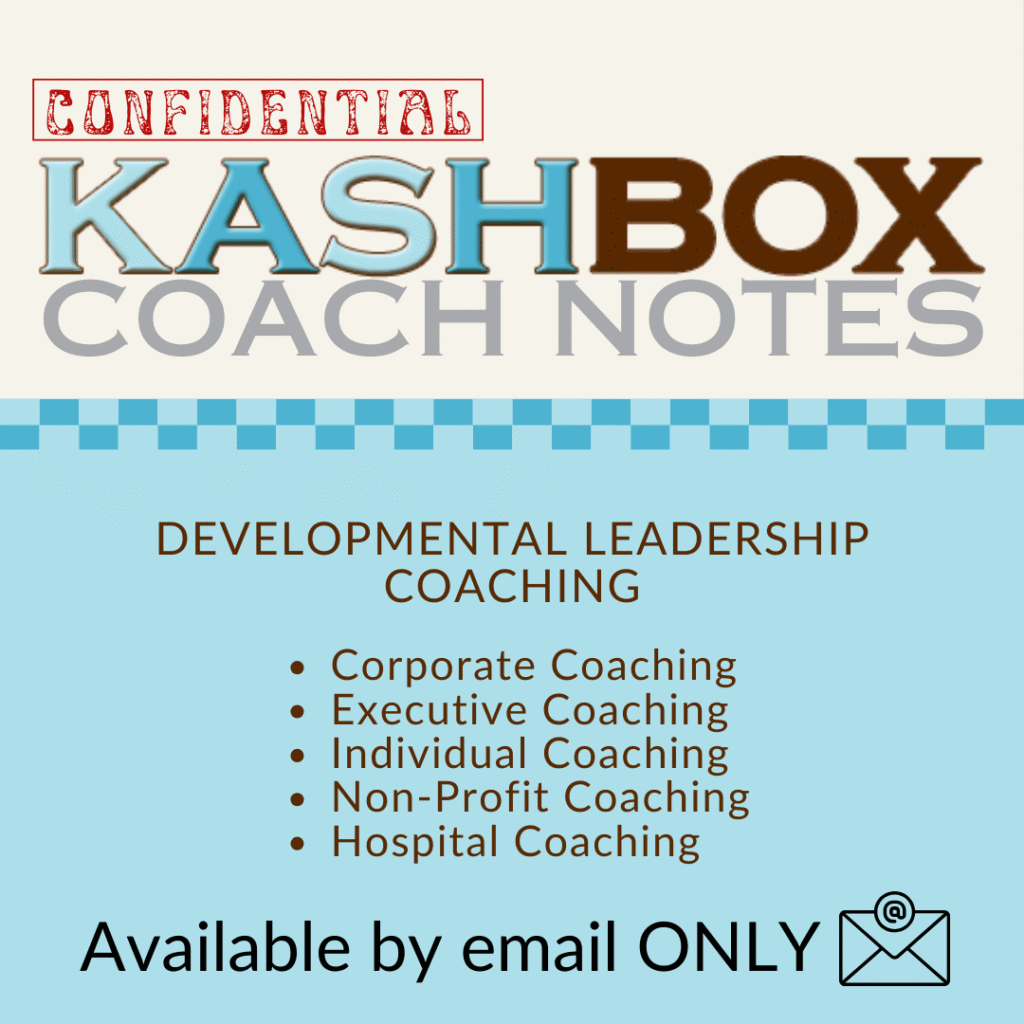Kashbox Coach Note: Leadership Coaching
As industries continue to evolve, the traditional model of workplace learning is being challenged. The days of one-time training programs or annual professional development courses are quickly fading. Instead, forward-thinking organizations are embracing the concept of learning ecosystems—dynamic environments where employees engage in continuous learning, skill development, and knowledge sharing throughout their careers.
This shift from periodic learning to an ecosystem approach is not just a reaction to changes in the job market; it’s about creating a culture that prioritizes lifelong development. In these environments, learning becomes an integral part of the workday, not something that happens in isolated intervals. So, how can organizations build learning ecosystems that drive personal growth, innovation, and long-term success?
What Is a Learning Ecosystem?
A learning ecosystem is an interconnected system of people, tools, resources, and processes that supports continuous learning and development. Unlike traditional training programs, which are often one-directional and time-bound, learning ecosystems are designed to be fluid, ongoing, and adaptable to both individual and organizational needs.
In a learning ecosystem, employees have access to multiple learning modalities: formal training programs, peer-to-peer mentoring, online courses, on-the-job learning, and collaborative tools. This multi-layered approach allows employees to take ownership of their learning, seeking out opportunities that align with their personal development goals and the company’s evolving needs.
At its core, a learning ecosystem encourages curiosity, collaboration, and constant skill enhancement. It breaks down the silos of traditional learning systems and integrates learning into the very fabric of an organization’s daily operations.
The Key Components of a Learning Ecosystem
- Flexible Learning Resources
To create a successful learning ecosystem, organizations need to provide a variety of learning tools and resources that cater to different learning styles. This includes online courses, interactive platforms, workshops, and real-time feedback mechanisms. Employees should be able to access these resources on demand, whether they’re looking to gain a new skill, solve a problem, or explore an area of interest.


5 Powerful Secrets of High-Performing Leaders
✓ 4 Strategic Wins for instant clarity and execution
✓ Beat Parkinson’s Law to dominate your schedule
✓ Optimize Your Energy for unstoppable productivity
✓ Read to Lead to accelerate personal and career growth
✓ Proven Learning Method that cements breakthroughs
Digital platforms such as learning management systems (LMS) or microlearning apps can make it easy for employees to learn in short, targeted sessions. Meanwhile, on-the-job training and peer learning can offer hands-on experiences that complement formal learning programs.
- Mentorship and Knowledge Sharing
Mentorship plays a critical role in a learning ecosystem. Employees not only benefit from the knowledge of senior leaders but also from peer mentoring, where colleagues share their expertise in real time. This creates an environment of shared learning, where team members are both teachers and students.
Encouraging cross-departmental collaboration further strengthens this aspect of the ecosystem. When people from different areas of the organization share their insights and experiences, it widens the scope of learning and promotes a culture of curiosity.
- Personalized Learning Pathways
Not all employees have the same learning needs, and a one-size-fits-all approach is no longer sufficient. A thriving learning ecosystem offers personalized learning pathways that allow employees to choose their own learning journeys. This could involve selecting courses or projects that align with their career goals, exploring topics outside their current role, or pursuing certifications that enhance their future potential.
Organizations can use data analytics to track employee progress and suggest learning opportunities that align with individual development goals. This creates a tailored experience where employees feel empowered to take control of their own growth.
- Continuous Feedback and Reflection
In traditional learning models, feedback often comes at the end of a course or after a performance review. In a learning ecosystem, feedback is continuous. Employees receive real-time input from peers and supervisors, allowing them to adjust their approach and apply what they’ve learned immediately.
This ongoing feedback loop encourages reflection, helping employees understand what works and what needs improvement. The result is a more agile workforce that learns from experience and adapts quickly to new challenges.
Why Learning Ecosystems Matter
The value of a learning ecosystem goes beyond individual growth—it’s a strategic advantage for organizations. In rapidly changing industries, companies that foster a culture of learning are better equipped to innovate and stay ahead of the curve. Continuous learning ensures that employees are developing new skills that align with emerging technologies, market trends, and business needs.
Moreover, learning ecosystems promote employee engagement. People want to feel that their organization is investing in their development, and when they do, they are more likely to stay with the company, contribute meaningfully, and evolve into leaders. Learning ecosystems create a sense of belonging and purpose, where growth is celebrated and progress is a shared goal.
Building a Culture That Supports Lifelong Learning
Creating a learning ecosystem is not just about offering the right tools—it’s about embedding learning into the culture of the organization. Leaders play a critical role in fostering this culture by encouraging exploration, supporting curiosity, and modeling a commitment to their own learning journeys.
- Promote Learning as a Core Value
Leaders can make learning a core organizational value by incorporating it into everyday conversations and decision-making processes. When employees see that leadership values continuous development, they are more likely to embrace it themselves.
Organizations can also recognize and reward learning efforts, whether through public acknowledgment, professional development stipends, or career advancement opportunities. By making learning an integral part of the company’s mission, leaders signal that growth is just as important as productivity.
- Encourage Experimentation and Innovation
A learning ecosystem thrives when employees feel comfortable taking risks and experimenting with new ideas. Leaders should create an environment where failures are seen as learning opportunities, not setbacks. This encourages a mindset of innovation and problem-solving, where employees are empowered to try new approaches without fear of repercussion. - Leverage Technology to Scale Learning
Technology is a critical enabler of learning ecosystems, especially in large or global organizations. By using AI-driven learning platforms, companies can provide employees with personalized learning experiences at scale. These platforms can recommend courses, suggest mentors, or connect employees with relevant projects, all based on individual interests and past learning behavior.
Additionally, virtual reality (VR) and augmented reality (AR) tools are being used to create immersive learning environments, particularly in industries like manufacturing, healthcare, and engineering. These technologies offer practical, hands-on experiences that can’t be replicated through traditional classroom learning.
- Measure the Impact of Learning
To ensure that a learning ecosystem is effective, organizations need to track and measure the impact of learning on both individual performance and business outcomes. This involves gathering data on learning engagement, skill acquisition, and how those skills are being applied on the job.
Organizations can use performance metrics to assess how learning is driving innovation, improving efficiency, or enhancing customer satisfaction. Regularly reviewing these metrics helps leaders refine the learning ecosystem and ensure it continues to meet the needs of the workforce.
The Future of Lifelong Learning in the Workplace
As the concept of a lifelong career continues to evolve, so too must the ways we approach professional development. The future of learning in the workplace will be shaped by ecosystems that allow for seamless, continuous growth. These environments will provide employees with the tools and resources to learn at their own pace, explore new areas of interest, and adapt to changing demands.
By fostering a culture that values curiosity, encourages collaboration, and embraces new technologies, organizations can create learning ecosystems that not only support individual growth but also drive long-term success.
The businesses that thrive in the future will be those that recognize learning is no longer a one-time event but a lifelong journey—one that is central to innovation, agility, and sustainability in a world of constant change.


Creator of the KASHBOX: Knowledge, Attitude, Skills, Habits
Helping You Realize Your Potential
I help people discover their potential, expand and develop the skills and attitudes necessary to achieve a higher degree of personal and professional success and create a plan that enables them to balance the profit motives of their business with the personal motives of their lives.


